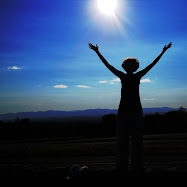In 3 months, I went to the dentist 3 times - with each visit almost exactly one month apart.
The dentist is a number of hours away and each trip in total took over 8 hours at the shortest.
on the last 2 visits, I also went out for lunch at the same restaurant after the dentist.
I found it much easier to assess the level and rate of improvement with those visits compared to somewhere I go once or twice a week around town.
Exposures:
same hours long drive there
in same newer, smelly vehicle
inhaling the same exhaust fumes
walking through the same parking garage,
air freshenered elevator,
cleaning producted bathroom,
chemical-filled dentist office,
scented serving person, carpeted restaurant
eating the same delicious but non-organic food
same hours long drive home
in same newer, smelly vehicle
inhaling the same exhaust fumes
Reactions:
with each trip my reactions were WAY less than the one before, my recovery time was faster (with trip 3 recovery time being none at all really because I pretty much didn't react all day!)
I should put that in it's own sentence.
I am improving fast enough that although Trip 1 felt like hell and Trip 2 still felt like an ordeal (though not a hellish one), Trip 3 produced pretty much NO negative reactions and therefore didn't require any recovery time.
I was slightly tired a bit after eating which happens to me anyway when I digest a large meal. I still disliked the various things I smelled but did not physically or cognitively react to them.
I also hade slightly sore shoulders which came up about 2 hours after getting home.
After finally washing perfume and etc fumes out of my hair that went away.
If someone had told me 3 years ago that this would ever be possible for me, I would not have believed them.
In Other Improvement News:
In other news, going out to stores, malls, etc with no mask is now the norm for me. I carry a mask in case I need to use a washroom that is ridiculously air freshenered but rarely use it.
The reactions from those 'out in public' places are lessening steadily and recovery time is almost instant after getting home.
It used to be that recovery time couldn't even start until I had showered and changed into clean clothing but now it begins the second I am in cleaner air.




